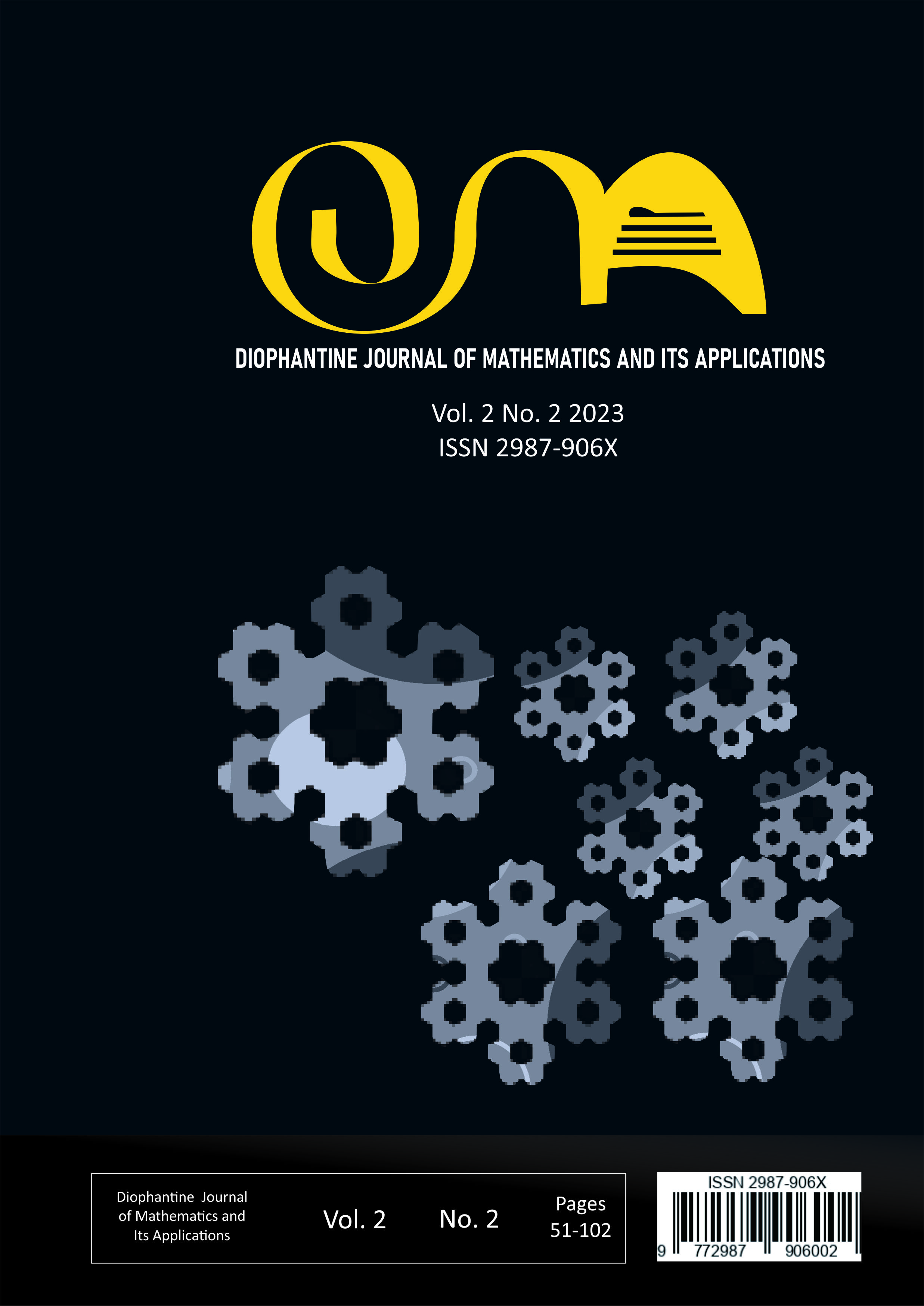Main Article Content
Abstract
Raw materials are important for a company, but the stockpile of raw materials that accumulates too many and too long adds to the inventory costs. Therefore, an appropriate inventory policy is needed to meet uncertain needs. This study discusses the uncertain need for paper raw materials at the Publisher X using the Additive Decomposition Forecasting method to determine the paper needs in the future. The Additive Decomposition Forecasting Method is used since the demand for paper raw materials is seasonal and tends to increase. Furthermore, after knowing the need of paper raw materials, inventory control planning is carried out by using P Model with the back order case because of the constant order period. The results of this study indicate that by implementing an inventory control policy with P Model with the case of back order, the Publisher X is able to save as 0.9067% of total inventory cost compared to the total cost using the company’s policy that have been used before.
Article Details
Copyright (c) 2024 Jihan Gita Sani, Anita Triska

This work is licensed under a Creative Commons Attribution 4.0 International License.
References
-
[1] S. Hanggana, Prinsip Dasar Akuntansi Biaya, Surakarta: Mediatama, 2006.
[2] Mulyadi, Akuntansi Biaya, Yogyakarta: STIE YKPN, 2005.
[3] D. R. L. Indah, P. and Z. Maulida, "Pengendalian Persediaan Bahan Baku pada PT. Aceh Rubber Industries Kabupaten Aceh Tamiang," Manajemen dan Keuangan, vol. 7, no. 2, pp. 157-173, 2018.
[4] D. Waters, Inventory Control and Management, Inggris: Wiley, 2003.
[5] A. T. Naibaho, "Analisis Pengendalian Internal Persediaan Bahan Baku Terhadap Efektifitas Pengelolaan Persediaan Bahan Baku," EMBA, vol. 1, no. 3, pp. 63-70, 2013.
[6] M. C. Tuerah, "Analisis Pengendalian Internal Persediaan Bahan Baku Terhadap Efektifitas Pengelolaan Persediaan Bahan Baku," EMBA, vol. 2, no. 4, pp. 524-536, 2014.
[7] S. Makridakis, S. C. Wheelwright and V. E. McGee, Forecasting: Methods and Applications, Singapore: John Wiley & Sons, 2006.
[8] P. Yuli, Modul Praktikum Analisis Runtun Waktu, Yogyakarta: FMIPA UII, 2016.
[9] A. E. Armi, A. H. Kridalaksana and Z. Arifin, "eramalan Angka Inflasi Kota Samarinda Menggunakan Metode Double Exponential Smoothing (Studi Kasus : Badan Pusat Statistik Kota Samarinda)," Informatika Mulawarman, vol. 14, no. 1, pp. 21-26, 2019.
[10] D. K. Sofyan, Perencanaan & Pengendalian Produksi, Lhoksemawe NAD: Graha Ilmu, 2013.
[11] A. R. Alias, N. Y. Zainun and I. A. Rahman, "Comparison between ARIMA and DES Methods of Forecasting Population for Housing Demand in Johor," MATEC Web of Conferences, vol. 81, no. 07002, 2016.
[12] I. Sungkawa and R. T. Megasari, "Penerapan Ukuran Ketepatan Nilai Ramalan Data Deret Waktu Dalam Seleksi Model Peramalan Volume Penjualan PT. Satriamandiri Citramulia," ComTech, vol. 2, no. 2, pp. 636-645, 2011.
[13] S. N. Bahagia, Sistem Inventori, Bandung: Penerbit ITB, 2006.
[14] E. P. Lahu and J. S. B. Sumurauw, "Penerapan Ukuran Ketepatan Nilai Ramalan Data Deret Waktu Dalam Seleksi Model Peramalan Volume Penjualan PT. Satriamandiri Citramulia.," EMBA, vol. 5, no. 3, pp. 4175-4184, 2017.
[15] E. Herjanto, Manajemen Operasi, Jakarta: PT. Grasindo, 2008.
[16] T. Baroto, Perencanaan dan Pengendalian Produksi, Jakarta: PT. Ghalia Indonesia, 2002.
[17] V. Lukitosari, "Penerapan Ukuran Ketepatan Nilai Ramalan Data Deret Waktu Dalam Seleksi Model Peramalan Volume Penjualan PT. Satriamandiri Citramulia.," Limits: Journal of Mathematics and Its Applications, vol. 9, no. 1, pp. 33-39, 2012.
[18] D. S. Pulungan and E. Fatma, "Analisis Pengendalian Persediaan Menggunakan Metode Probabilistik dengan Kebijakan Back order dan Lost sales," Teknik Industri, vol. 19, no. 1, pp. 38-48, 2018.
References
[2] Mulyadi, Akuntansi Biaya, Yogyakarta: STIE YKPN, 2005.
[3] D. R. L. Indah, P. and Z. Maulida, "Pengendalian Persediaan Bahan Baku pada PT. Aceh Rubber Industries Kabupaten Aceh Tamiang," Manajemen dan Keuangan, vol. 7, no. 2, pp. 157-173, 2018.
[4] D. Waters, Inventory Control and Management, Inggris: Wiley, 2003.
[5] A. T. Naibaho, "Analisis Pengendalian Internal Persediaan Bahan Baku Terhadap Efektifitas Pengelolaan Persediaan Bahan Baku," EMBA, vol. 1, no. 3, pp. 63-70, 2013.
[6] M. C. Tuerah, "Analisis Pengendalian Internal Persediaan Bahan Baku Terhadap Efektifitas Pengelolaan Persediaan Bahan Baku," EMBA, vol. 2, no. 4, pp. 524-536, 2014.
[7] S. Makridakis, S. C. Wheelwright and V. E. McGee, Forecasting: Methods and Applications, Singapore: John Wiley & Sons, 2006.
[8] P. Yuli, Modul Praktikum Analisis Runtun Waktu, Yogyakarta: FMIPA UII, 2016.
[9] A. E. Armi, A. H. Kridalaksana and Z. Arifin, "eramalan Angka Inflasi Kota Samarinda Menggunakan Metode Double Exponential Smoothing (Studi Kasus : Badan Pusat Statistik Kota Samarinda)," Informatika Mulawarman, vol. 14, no. 1, pp. 21-26, 2019.
[10] D. K. Sofyan, Perencanaan & Pengendalian Produksi, Lhoksemawe NAD: Graha Ilmu, 2013.
[11] A. R. Alias, N. Y. Zainun and I. A. Rahman, "Comparison between ARIMA and DES Methods of Forecasting Population for Housing Demand in Johor," MATEC Web of Conferences, vol. 81, no. 07002, 2016.
[12] I. Sungkawa and R. T. Megasari, "Penerapan Ukuran Ketepatan Nilai Ramalan Data Deret Waktu Dalam Seleksi Model Peramalan Volume Penjualan PT. Satriamandiri Citramulia," ComTech, vol. 2, no. 2, pp. 636-645, 2011.
[13] S. N. Bahagia, Sistem Inventori, Bandung: Penerbit ITB, 2006.
[14] E. P. Lahu and J. S. B. Sumurauw, "Penerapan Ukuran Ketepatan Nilai Ramalan Data Deret Waktu Dalam Seleksi Model Peramalan Volume Penjualan PT. Satriamandiri Citramulia.," EMBA, vol. 5, no. 3, pp. 4175-4184, 2017.
[15] E. Herjanto, Manajemen Operasi, Jakarta: PT. Grasindo, 2008.
[16] T. Baroto, Perencanaan dan Pengendalian Produksi, Jakarta: PT. Ghalia Indonesia, 2002.
[17] V. Lukitosari, "Penerapan Ukuran Ketepatan Nilai Ramalan Data Deret Waktu Dalam Seleksi Model Peramalan Volume Penjualan PT. Satriamandiri Citramulia.," Limits: Journal of Mathematics and Its Applications, vol. 9, no. 1, pp. 33-39, 2012.
[18] D. S. Pulungan and E. Fatma, "Analisis Pengendalian Persediaan Menggunakan Metode Probabilistik dengan Kebijakan Back order dan Lost sales," Teknik Industri, vol. 19, no. 1, pp. 38-48, 2018.
